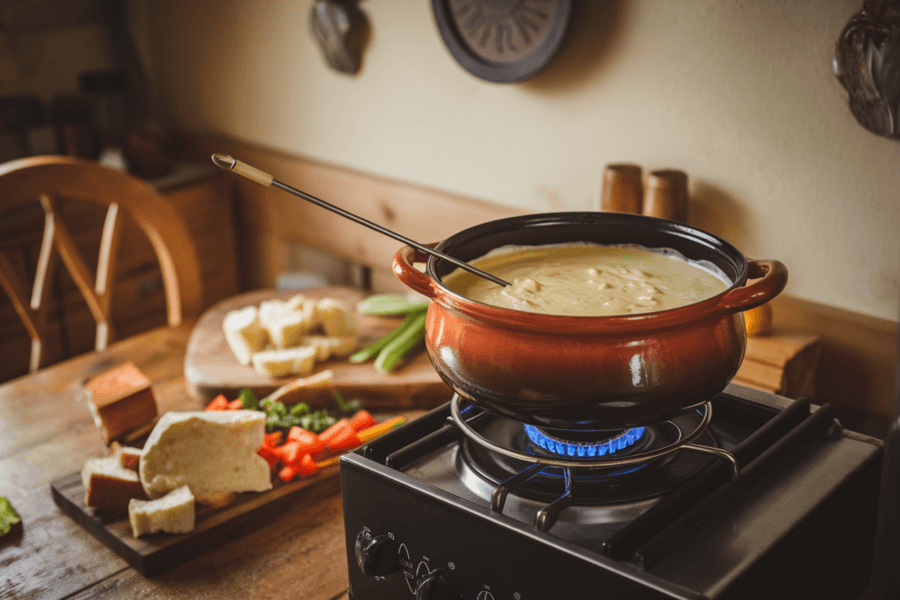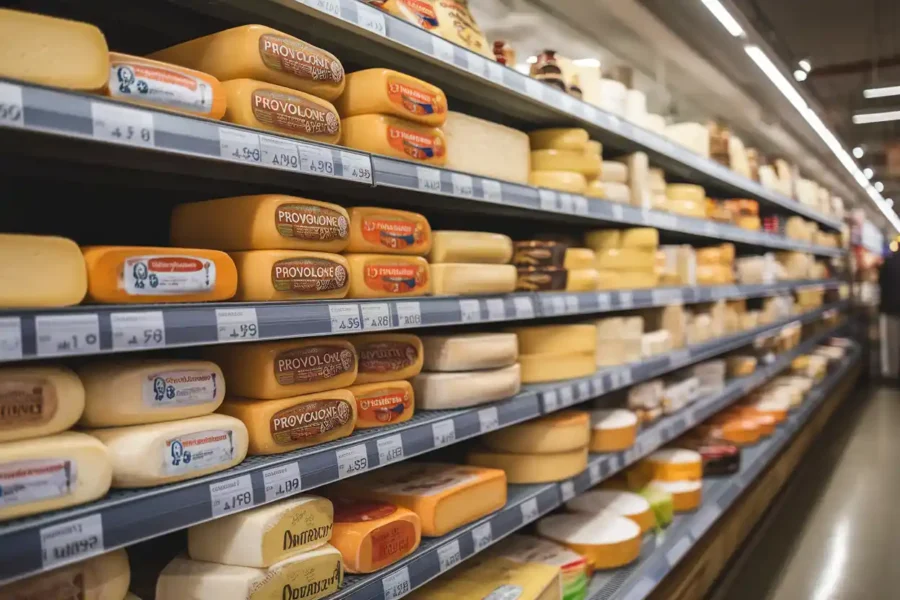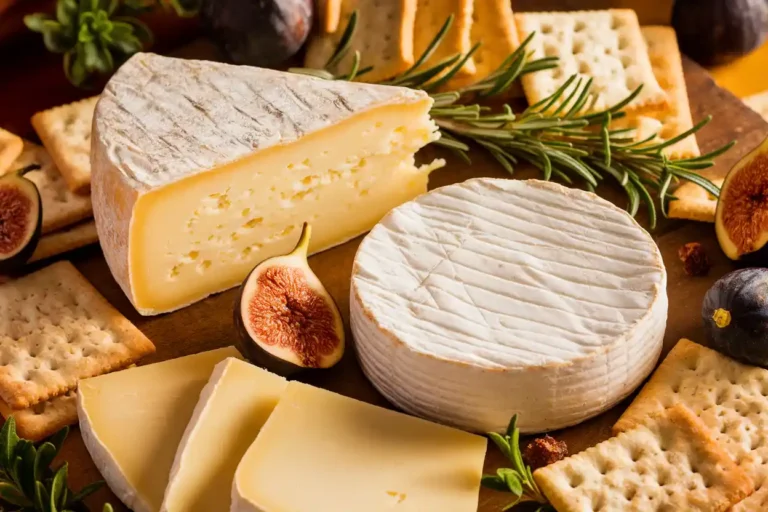Cheese lovers often find themselves comparing different varieties to choose the perfect one for their recipes. A common question arises: Is Fontina the same as Provolone? While both are Italian cheeses with a long history, they differ significantly in flavor, texture, and culinary uses.
In this article, we’ll explore everything you need to know about Fontina and Provolone cheeses. From their origins and production methods to their unique characteristics and uses in cooking, this guide will help you understand their similarities and differences. Let’s dive in!
Table of Contents
Introduction to Fontina and Provolone
What Are Fontina and Provolone?
Fontina and Provolone are two of Italy’s most beloved cheeses, celebrated for their rich flavors and versatility. Fontina is a semi-soft cheese known for its creamy texture and nutty undertones. It originates from the Aosta Valley in northern Italy, where it’s been made for centuries. This cheese is ideal for melting, making it a popular choice for fondues, pasta, and sauces.
On the other hand, Provolone is a semi-hard cheese with a firmer texture and a sharper taste, especially when aged. Provolone is made in southern Italy, often shaped into large rounds or elongated forms. It’s available in both mild and sharp varieties, catering to a wide range of culinary applications.
Why Compare Fontina and Provolone?
So, why do people wonder is Fontina the same as Provolone? Both cheeses are versatile, delicious, and staples in Italian cuisine, but they serve different purposes in cooking. Fontina excels in creamy dishes, while Provolone’s sharper flavor makes it perfect for sandwiches and baked dishes. By understanding their unique traits, you can make better choices when substituting or pairing them in recipes.
Stay tuned as we explore their origins, production processes, flavors, and more to settle the Fontina versus Provolone debate once and for all.
Origins and Production of Fontina and Provolone
The History of Fontina Cheese
Fontina cheese has a rich and storied history that dates back to the 12th century in the Aosta Valley of northern Italy. Known for its creamy and nutty flavor, it is made using raw, unpasteurized cow’s milk, which reflects the lush Alpine pastures that feed the cows. Authentic Fontina, also known as Fontina Val d’Aosta, carries a Protected Designation of Origin (PDO) status, ensuring strict adherence to traditional methods.
Over the centuries, Fontina’s popularity spread, leading to modern variations in Denmark, Sweden, and the United States. These versions are often milder and softer than the robust and earthy Italian original.
The Origins of Provolone Cheese
Unlike Fontina, Provolone originated in southern Italy and is a product of the pasta filata (stretched-curd) cheese family, like Mozzarella. Provolone is made from cow’s milk and comes in various shapes, from pear-like forms to cylindrical wheels. Its unique production includes kneading and stretching the curds before aging, giving it a distinctive texture.
Provolone has two main styles: Provolone Dolce, which is aged for 2-3 months and offers a mild flavor, and Provolone Piccante, aged for longer with a sharper, tangier profile. This aging process develops the complex flavors that distinguish Provolone from Fontina.
Differences in Production Methods
Fontina and Provolone differ significantly in their production processes. Fontina is made by curdling raw milk, molding it into rounds, and aging it in caves for about 3 months, which allows it to develop its characteristic creamy texture and earthy flavor. On the other hand, Provolone undergoes a stretching process where the curds are pulled and shaped, creating a firmer, elastic texture. Provolone is then brined and aged for varying lengths of time to develop its flavor.
These differences in production highlight why Fontina and Provolone are not the same. Their origins, milk types, and aging techniques produce distinct cheeses with unique culinary applications.
Flavor Profiles and Textures Compared
What is the Flavor of Fontina Cheese?
Fontina cheese is prized for its mild, nutty flavor with buttery undertones that deepen as it ages. Younger Fontina has a creamy and slightly sweet profile, making it perfect for melting in fondues or sauces. The Italian version, especially Fontina Val d’Aosta, features a more robust, earthy taste with hints of grassiness due to its raw milk origin.
What Does Provolone Cheese Taste Like?
Provolone cheese offers a more varied flavor profile depending on its aging. Provolone Dolce is mild, with a subtle buttery sweetness, while Provolone Piccante is sharper and tangier, with a savory depth that pairs well with cured meats and sandwiches. The stretching process also adds a slight tang to the cheese, setting it apart from Fontina.
Texture Comparison: Fontina vs. Provolone
When comparing the textures of these two cheeses, the differences become even more apparent. Fontina’s creamy and smooth texture makes it ideal for melting into gooey dishes like fondue or risotto. Meanwhile, Provolone’s firm and slightly elastic consistency is better suited for slicing and shredding. Its structure holds well in baked dishes, providing a chewy and satisfying bite.
Ultimately, the contrasts in flavor and texture clarify why people often ask, is Fontina the same as Provolone? While they share Italian roots, their characteristics make them distinctly different.
Culinary Uses of Fontina and Provolone
How Fontina Is Used in Cooking
Fontina is a chef’s favorite for recipes that require a smooth and creamy melt. Its mild, buttery flavor complements a variety of dishes, from appetizers to main courses. Here are some popular uses:
- Fondue: Fontina melts effortlessly, making it ideal for traditional cheese fondues paired with bread and vegetables.
- Risotto and Pasta: It adds a rich, creamy texture to risotto and pasta dishes without overpowering other ingredients.
- Stuffed Vegetables or Meat: Fontina’s gooey consistency works wonderfully for stuffing chicken breasts or bell peppers.
If you’re looking for more ideas, check out recipes for creamy pasta dishes like Best Cheeses for Spaghetti on Tasty Sara.
Classic Dishes Featuring Provolone
Provolone’s versatility shines in recipes where its firm texture and sharp flavor can stand out. Some examples include:
- Sandwiches and Subs: Provolone’s ability to slice neatly makes it a classic choice for deli sandwiches.
- Baked Dishes: It creates a golden crust on lasagna, eggplant Parmesan, and meatball casseroles.
- Charcuterie Boards: Both Provolone Dolce and Piccante add variety to cheese boards with their mild or tangy profiles.
Can Provolone Substitute Fontina?
This is a common question when discussing is Fontina the same as Provolone? While Provolone can replace Fontina in some recipes, especially baked dishes, it doesn’t melt as smoothly. Fontina’s creamy texture is better suited for sauces or fondues, whereas Provolone’s firmer consistency is perfect for slicing or grating.
When substituting one for the other, consider the dish’s requirements and desired flavor profile. For example, if you’re making a fondue, Fontina is the better choice. For a sandwich, Provolone’s firm texture and mild tang are ideal.

Nutritional Differences
Caloric and Fat Content
Both Fontina and Provolone are calorie-dense cheeses, but their fat content varies slightly. Fontina has approximately 120 calories and 9 grams of fat per ounce, with a creamy composition suited for indulgent dishes. Provolone, on the other hand, contains about 100-110 calories and 8 grams of fat per ounce, making it slightly lighter.
Protein and Calcium Levels
Fontina and Provolone are excellent sources of protein, with around 7-8 grams per ounce. They also provide ample calcium, supporting bone health. Provolone, especially the aged Piccante variety, often contains a higher sodium level due to its curing process, so it may not be suitable for low-sodium diets.
Dietary Considerations for Fontina and Provolone
When discussing is Fontina the same as Provolone?, it’s essential to consider dietary preferences. Fontina, especially the Italian version, contains lactose, while aged Provolone may have reduced lactose levels due to fermentation. For vegetarians, check the label to confirm whether microbial rennet was used in production.
If you’re exploring new recipes, consider Tasty Sara’s cheese-inspired dishes for more creative ideas to incorporate these flavorful cheeses into your meals.
Price and Availability
Is Fontina Cheese Easy to Find?
Fontina cheese, especially the authentic Italian Fontina Val d’Aosta, is widely available at specialty grocery stores and online retailers. However, domestic versions, like those from Denmark or the U.S., are more common and generally less expensive. Imported Fontina costs more due to its Protected Designation of Origin (PDO) status, but it’s worth the splurge for its earthy and nutty flavors.
If you’re looking for a versatile cheese for cooking or melting, domestic Fontina provides a more affordable option. However, it’s essential to note that these versions are often milder and less robust than their Italian counterparts.
Provolone Cheese: Widely Available?
Provolone cheese is easier to find in most supermarkets, as it’s a popular choice for sandwiches and pizza. Whether you prefer the milder Provolone Dolce or the tangy Provolone Piccante, you’ll likely find options at varying price points. Its longer shelf life and versatility make it a pantry staple for many.
When comparing is Fontina the same as Provolone, the availability of Provolone often makes it the go-to choice for everyday cooking. For gourmet dishes requiring a creamier cheese, Fontina might still win your vote.

FAQs About Fontina and Provolone
What Can You Use in Place of Fontina Cheese?
If you’re out of Fontina cheese, several substitutes can work depending on your dish. Provolone, while not as creamy, is a common replacement for recipes where a firmer cheese is acceptable. Mozzarella or Gouda can also step in, especially for melting applications.
However, when asking is Fontina the same as Provolone, keep in mind that Fontina has a unique buttery flavor that might not be fully replicated by other cheeses.
What is the Flavor of Fontina Cheese?
Fontina’s flavor is often described as mild and nutty, with hints of grassiness in its Italian version. Its creaminess makes it a perfect addition to fondue, risotto, or pizza.
Can You Substitute Provolone for Fontina?
Yes, Provolone can substitute for Fontina in some dishes, but it’s better suited for recipes requiring a firm, sliceable cheese. Provolone lacks Fontina’s smooth melting ability, so it may alter the texture of your dish.
Is Provolone the Same as Fontina?
No, Provolone and Fontina are not the same. While both are Italian cheeses, their flavors, textures, and uses differ significantly. Fontina is creamier and milder, ideal for melting, whereas Provolone has a firmer texture and tangier taste, making it perfect for slicing and baking.
Conclusion
Key Differences Between Fontina and Provolone
When considering the question is Fontina the same as Provolone, the answer becomes clear through their key differences. Fontina is a semi-soft cheese with a creamy texture and mild, nutty flavor, ideal for melting in fondues, sauces, and creamy dishes. In contrast, Provolone is a semi-hard cheese with a firmer texture and sharper taste, especially in its aged Provolone Piccante form, making it perfect for slicing, shredding, or baking.
Their origins also set them apart Fontina hails from the Aosta Valley in northern Italy, while Provolone is rooted in southern Italy’s stretched-curd cheese tradition. Fontina’s natural rind and earthy aroma make it unique, while Provolone’s distinct aging process lends it tangy and savory notes.
Which Cheese Is Right for Your Dish?
Choosing between these cheeses depends on your recipe. If you’re creating a creamy pasta dish or gooey fondue, Fontina is the better option. On the other hand, Provolone works wonderfully in deli sandwiches, pizzas, or casseroles where a firmer texture is needed.
Understanding the differences ensures you select the best cheese for your culinary needs. Whether you choose Fontina or Provolone, both bring their own Italian charm to your table.

